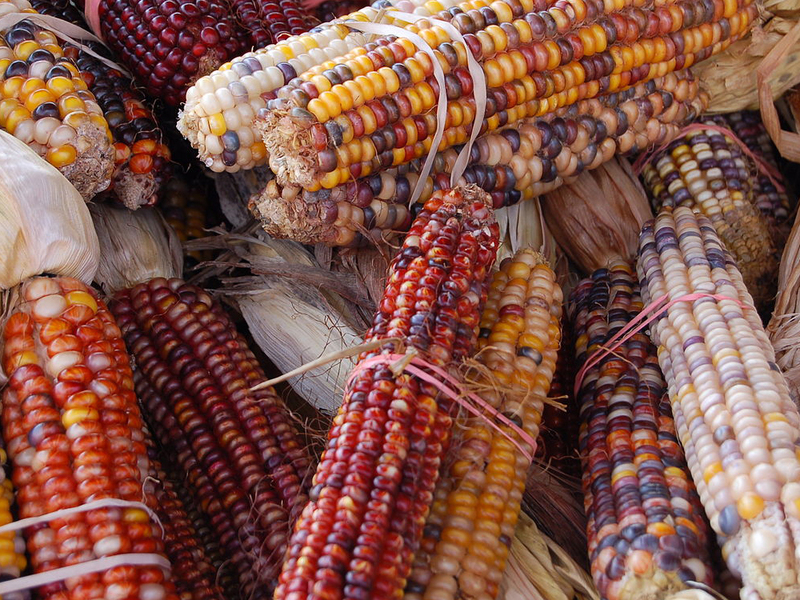What is old is new again. With the new year it is good to look back at what is old and what is new in the garden. Take old, as in ancient, seeds from New Mexico. New Mexico itself is old, even older than Mexico. New Mexico is often mistakenly believed to be named after the nation of Mexico. Trouble is that New Mexico was named in 1563 by Spanish explorers who thought the area had wealthy Indian cultures like those of the Mexica or Aztecs. What is now the country Mexico was at the time known as New Spain and wasn’t named “Mexco” until the 1800s. So New Mexico is older by hundreds of years than Old Mexico.
In the southwestern corner of “old” New Mexico are cliff dwellings of the Mogollon culture which flourished from circa 200 CE to about the 16th century. The Mogollon became expert farmers, using a variety of irrigation techniques to grow food in the harsh climate. Amazingly, seeds of some of their crops exist today, such as the aptly named Gila Cliff Dweller squash (Cucurbita mixta). This is a large, somewhat pear-shaped, white-skinned squash that can grow up to 20 or 30 pounds. The yellow to orange flesh is perfect for roasting as a main dish or adding sugar, eggs and milk and baking into pies. Like all squash they do well in rich soil with plenty of organic matter such as compost. Plant them in full sun after the ground has warmed up in the spring. A soil pH of 6 to 7.5 is ideal. Keep them well watered but not soggy. Once you pick the squash let them cure in a cool place for about a month to harden their skin. Once cured they will keep until spring.
Another ancient Indian crop are Anasazi Beans (Phaseolus vulgaris). Anasazi is a Navajo word loosely translated as “ancient ones” or “enemies of our ancestors,” though modern Indians prefer the name Puebloan. These beans were found at the turn of the 20th century in the Four Corners area where the states of Utah, Colorado, Arizona and New Mexico come together. Anasazi beans are gorgeous white-and-maroon mottled beans that cook up quickly into a creamy broth. They also make a good stew or soup as well as baked beans. Anasazi beans are high in protein, with lots of potassium, iron and folate. Because they have a slightly sweet flavor they pair well with spicy dishes such as chili con carne and can be used wherever you use pinto beans or kidney beans.
Plant Anasazi beans directly in the garden after all danger of frost has passed and the ground is warm. Sow the seeds an inch deep, two inches apart, in rows at least two feet apart. Avoid soil that is too fertile or the plants will produce lots of leaves and few beans. Anasazi beans do best with a soil pH between 5.0 and 7.5.
Anasazi Sweet Corn (Zea mays) is a high-yielding, open- pollinated sweet corn with beautiful multicolored kernels. Each ear can contain multiple colors of yellow, blue, red, and even striped, or the ears can be all one color. This diversity is common in so-called land races where all the genes are mixed. Anasazi Sweet Corn will grow up to eight feet tall. The ears vary widely in length from just under fives inches long to over eight inches long. The corn is sweet, with an old-fashioned, almost nutty flavor, missing in today’s hybrid sugary sweet corns. Traditionally, most corn was raised as a grain crop to use for baking, and Anasazi Sweet Corn is ideal for making your own colorful corn meal, as well as eating freshly picked and boiled. Not surprising, given its Southwestern origins, this corn stands up well to heat.
Plant Anasazi Sweet Corn in rich garden soil after all danger of frost. Because corn is wind pollinated, plant in blocks of at least six rows. This will encourage good pollination and full ears. Plant sweet seed about an inch deep, six inches apart in rows three feet apart. Corn is a heavy feeder, so it responds well to good organic fertilizers and regular watering.
Seeds of ancient crops are available from Baker Creek Heirloom Seed (www.rareseeds.com, 2278 Baker Creek Road, Mansfield, MO 65704, phone: 417-924-8917; Bountiful Gardens (www.bountifulgardens.org, 1712 S Main St, Willits, CA 95490, phone: 707-459-6410); and Native Seed Search (online at www.nativeseeds.org).
Make one of your new year’s resolutions to grow ancient crops. Handed down for generations or discovered in cliff dwellings, they are tasty reminders of a place long ago and far away.


















































